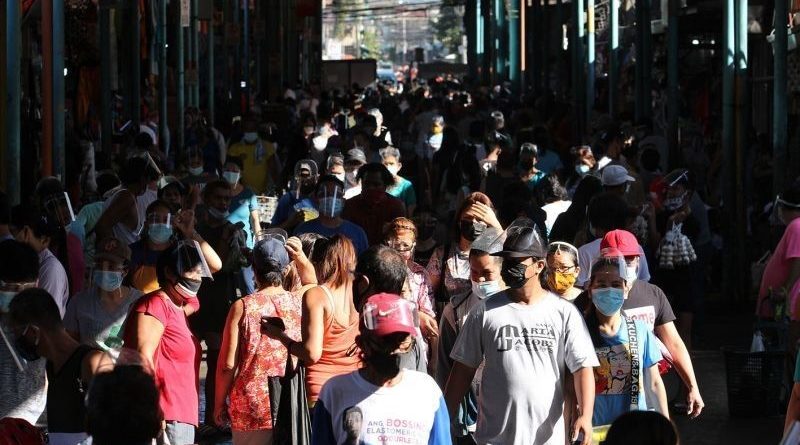HEADLINES: MANILA, Philippines -Daily cases near 10,000; ‘soft’ MECQ pushed
The coronavirus COVID-19 is affecting 218 countries and territories around the world and 2 international conveyances.
.
COVID-19 infection crosses 126.6 million globally as deaths cross 2.77 million.
.
Here is the GLOBAL status as of Saturday, 7am, March 27, 2021
.

The Philippines recorded +9,838 new cases, bringing the total to 702,856 with +54 new deaths, bringing total 13,149 deaths.

MANILA, Philippines — As the number of confirmed COVID-19 infections approaches 10,000 cases per day, the OCTA Research Group said Metro Manila may have to revert to a softer version of the modified enhanced community quarantine (MECQ) if the current bubble imposed over the so-called National Capital Region Plus or NCR+ fails to stop the surge.
Yesterday, the Department of Health (DOH) logged a total of 9,838 new cases, another highest daily tally since the pandemic started last year and nearly five times the 2,037 cases recorded last March 1 when the country started seeing a rising trend in cases.
The OCTA Research Group warned earlier that if the trend continues, the country would be seeing 11,000 cases per day by the end of the month and could reach as high as 8.5 million in Metro Manila by June 30.

The DOH is eyeing poor compliance with health protocols and the detection of new COVID-19 variants as among the factors that contributed to the steep rise in the number of cases. At present, the country has the United Kingdom or B.1.1.7 variant, South Africa or B.1.351 variant, Brazil or P.1 variant and P.3 variant, which was first detected in the Philippines.
Even with the new record, the DOH said seven laboratories were not able to submit their test results.
Data showed that the 9,838 cases brought the total number to 702,856 cases, of which 109,018 are considered active (patients who have not recovered from the illness). It also showed that 54 patients succumbed to the virus, bringing the death toll to 13,149, while 663 patients recovered to bring the total number of recoveries to 580,696.
As hospitals and isolation facilities get filled up with COVID-19 patients, the DOH is setting up “modular hospitals” that are adjacent to existing health care facilities.
DOH Undersecretary Leopoldo Vega said at a press briefing that these modular hospitals can help decongest the existing facilities that are now being overwhelmed by patients.
DOH data showed that 54 percent of 1,900 ICU beds nationwide are still available while 43 percent of 13,500 isolation beds are unoccupied. It also showed that 43 percent of 6,000 ward beds are vacant while 36 percent of 2,000 ventilators are not in use.
.

Soft MECQ
In an interview with The Chiefs on One News/TV 5 on Thursday night, OCTA fellow Ranjit Rye warned that Metro Manila may have to go back to a softer version of MECQ if the current NCR+ bubble fails to stop the surge of new COVID-19 cases.
“We’re optimistic about (the bubble) but expectations have to be real. If it fails to bring down the surge, then we may consider MECQ,” Rye said.
He clalified that the MECQ he was referring to would be a modified version of what was imposed last year, citing the need for transportation to continue for the benefit of workers.
Unlike the original MECQ classification, their proposal is to still allow government offices and industries to continue but with a significant reduction of work force. Malls, groceries and other essential businesses will continue to operate but at a limited capacity, with all social gatherings prohibited.
.

In his latest interview, Rye said the country is not yet at the decision point on whether to impose stricter quarantine classification, noting that the effects of the bubble has yet to be seen.
“We’re still hoping that this bubble will work,” he said. “The government obviously is doing its best and OCTA’s position is to give this bubble a chance.”
OCTA fellow Guido David said “we will have a clearer picture of the effects of the bubble by Monday.”
“We have to give this bubble a chance because, sometimes, it takes one week before the effects of interventions are seen,” he explained.
While Metro Manila remains under GCQ, the government over the week adopted stricter measures to control the surge of new cases, including the implementation of a bubble over the region and the nearby provinces of Cavite, Laguna, Rizal and Bulacan.
OCTA said it has also recorded a surge of new cases in provinces outside the bubble, particularly in Batangas and Pampanga.
“It’s not surprising that it’s spreading in other places. The experience is it generally spreads out to other regions very quickly because mobility is still there,” Rye pointed out.
“The current surge is making the last surge in NCR look like a walk in the park. This is why we’re trying to sound the urgency so that people, the government, local government and the private sector can work together to give this bubble a chance,” he added. – Janvic Mateo
.











